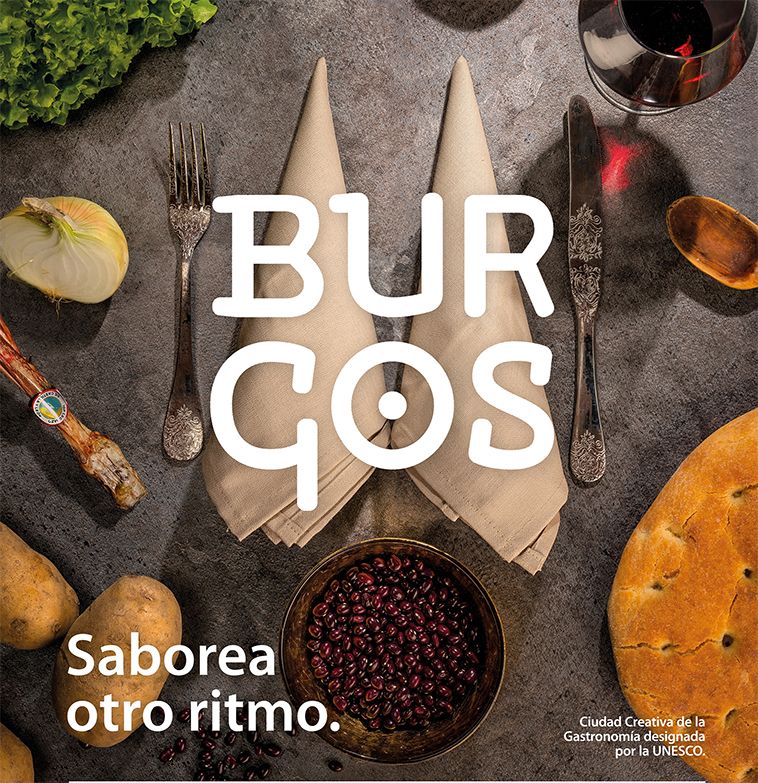“HOMO GASTRONOMUS”
Burgos Creative City of Gastronomy is an evolutionary journey of the human species that culminates in the ‘Homo gastronomus‘, which transforms a biological need – that of nourishing ourselves – into an art, which is gastronomy. Almost everything that our organism can eat has been incorporated into the diet in one place or another on the planet, in one culture or another (Mateos and Rodríguez, 2010. “La dieta que nos hizo humanos” [the diet that made us human]).
“Scientists and citizens are going to be involved in this project so it will be a substantial contribution to the Global Culinary Evolution Laboratory. The Motores Humanos [Human Engines] Project can be summed up as the survival and viability of the human species being a question of energy balance on the planet. The balance between food intake and energy expenditure could sustain or compromise the sustainability of human populations in their environments. Human ingenuity should ensure that this fragile equilibrium does not falter. This method of “active citizen science” is one of the best ways to involve society in “science and the science kitchen”. The “scientific ecosystem” of the Motores Humanos project contributes to the culinary creativity project, feeding the other “clusters” (food and gastronomy) of the whole system of Burgos, the Creative City of Gastronomy”, concludes Ana Mateos.
Gastronomy is intrinsically specific to our species, the same way that music or other forms of artistic expression are. But ‘Homo Gastronomus’ has a responsibility to its species and to the planet, it forms part of the new species – the ‘Homo exnovo’ – proclaimed by one of the co-directors of Atapuerca, Eudald Carbonell. The ‘Homo exnovo’ is defined by the socialisation of knowledge, which makes a better life possible for the whole world, and by solidarity as a value for achieving a strong critical awareness of the species.
Our starting point is that, in terms of genetics, today’s humans live in a nutritional environment that differs from that for which our genetic constitution was selected. In the last 10,000 years of humankind, food production has undergone successive changes due to the development of technologies that have made it more efficient, including new methods of storage and processing. The culinary culture of each population was considerably enriched during this period. However, it was the industrial revolution that modified food production and technology the most and made cheaper food available for consumption. This has intensified evolutionary discordance, which is at the heart of the emerging epidemiology of chronic diseases related to nutrition.
In addition, there has been a culinary revolution, which has meant that enjoying food has become a priority, consolidating traditional dishes and modifying presentations, textures, flavours, colours and so on, while incorporating food technology techniques. Furthermore, this makes it possible to cover the expectations of the different population groups with regard to demands and needs, including satisfying the most demanding palates as well as maintaining this pleasure for “Homo gastronomus” individuals who, due to their age or other circumstances, have lost abilities that enable them to enjoy food.
As a Global Culinary Evolution Laboratory, Burgos would like to establish ‘homo gastronomus’ standards. A research platform that serves the network of UNESCO creative cities and other cities all over the world.


